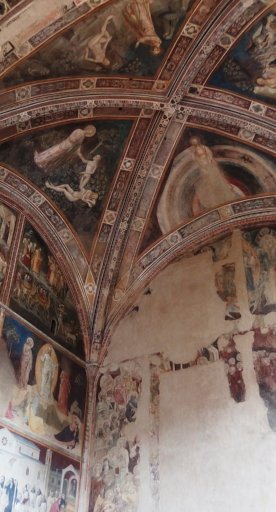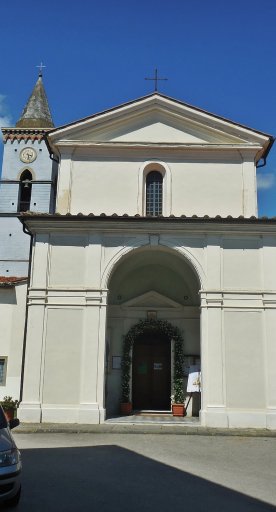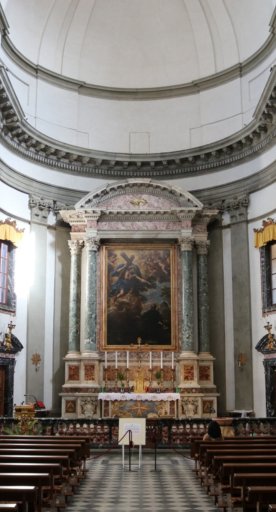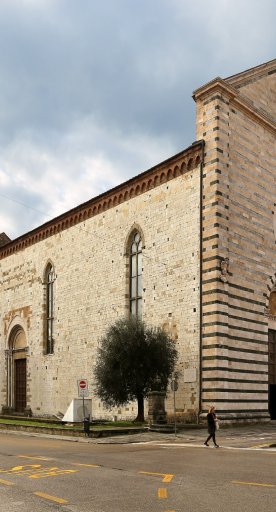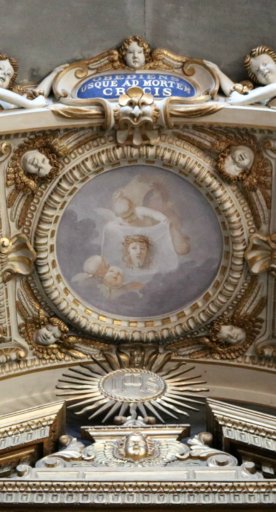Church of Sant’Andrea in Pistoia
The interior houses a masterpiece of Pistoia art: the pulpit by Giovanni Pisano
The Church of Sant’Andrea is located in the historic center of Pistoia, likely founded around the 8ᵗʰ century and modified in the period between the 12ᵗʰ and 13ᵗʰ centuries. Initially designated as a parish, the church was still considered “second in dignity only to the Cathedral.” The three-aisled interior of the church preserves a masterpieces of Pistoia art, the pulpit by Giovanni Pisano (1298–1301), with a sculptural decoration consisting in five white marble parapets decorated in high relief representing scenes relating to the Stories of the Life of Christ. The pulpit is hexagonal in shape and rests on seven columns supported by stylophore lions and a curved atlas. The worship building additionally houses two painted wooden crucifixes attributed to Giovanni Pisano. Behind the altar is a painted cross depicting the Holy Face of Lucca.
The exterior façade and lintel dated to 1166, adorned with the Cavalcade of the Three Kings, are attributed to brothers Gruamonte and Adeodato, sculptors active in Pistoia in the 12ᵗʰ century. The Three Kings depicted are considered the first pilgrims in Christian history, chosen precisely to pay homage to the strategic role that the Parish Church of Sant’Andrea plays in terms of pilgrimage. In fact, after visiting the sites dedicated to the worship of Saint James in Pistoia, pilgrims could head from the Sant’Andrea Gate toward the Apennine passes in a northerly direction, following the Via Francesca della Sambuca, or continue in the direction of Santiago de Compostela via the “Caminos de Santiago” system.
At present, the building next to the church houses the headquarters of the Spedale di Sant’Andrea e San Jacopo, belonging to the Confraternita di San Jacopo di Compostella and offering accommodation for pilgrims. Operating under the same principles and rules that welcome and host thousands of pilgrims each year along the Cammino di Santiago, on the Via Francigena or in the city of Rome, it welcomes contemporary pilgrims along the Cammino di San Jacopo (Way of Saint Jacopo).
Interestingly, the use of columns, arches, carved reliefs in the lintels and, above all, two-colored façades are the elements that characterize the “Pistoia-Romanesque,” of which the Churches of Sant’Andrea, San Bartolomeo, San Pier Maggiore and San Giovanni Fuorcivitas represent the highest expression.



